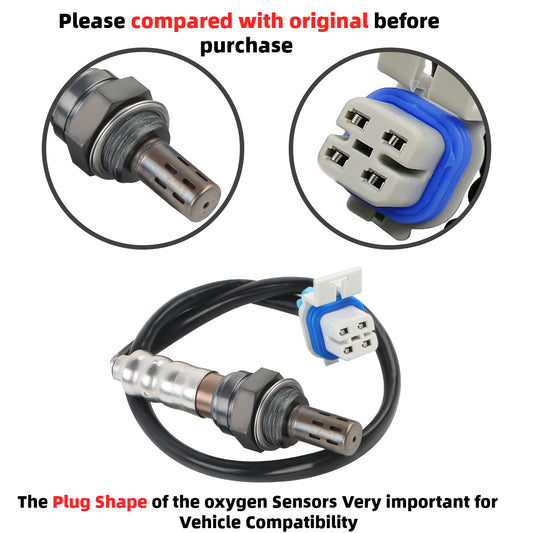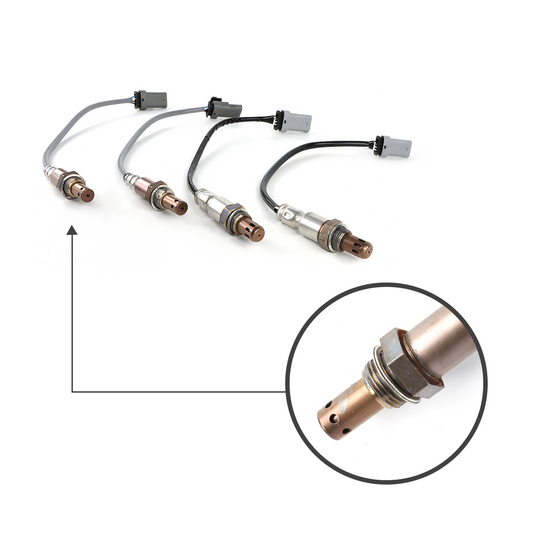Fuel Injectors: The Heart of the Modern Engine
The fuel injector is a small electromechanical device to maintain engine rotation. Whether you're driving a gasoline or diesel powered vehicle, the fuel injectors play a crucial role in ensuring the engine runs efficiently and reliably. In this article, we have compiled some information on what a fuel injector is, how it works, and an introduction to two types of injector nozzles. So, let's dive in and learn more about these essential contents!
What is a fuel injector?
The fuel injector, an important component of the engine, is to atomize the fuel into fine fuel droplets and injects it into the specific part of the inner chamber for engine combustion. Further, the injector is a type of solenoid valve, with the nozzle facing the intake manifold and its tail end connected to the fuel distributor. Meanwhile, the injector can also judge its pulse width and period based on the calculation by the ECM (Engine Control Module) or the ECU, which forces fuel into the intake manifold or cylinder instead of the combustion chamber. This ensures that gas or diesel fuel is delivered in a moderate and timely manner, mixing more fully with air before burning in the engine.

The fuel injector is a finishing instrument featuring spray characteristics such as atomization granularity, fuel mist distribution, fuel beam direction, range, and diffusion cone angle, which must fit various combustion chambers. Besides, the requirements of the diesel engine combustion system also include uniform atomization, no dripping when quickly cutting off the fuel, certain injection pressure and range as well as a suitable spray cone angle. Only when all the above conditions are met can the mixture formation and complete combustion be achieved, resulting in a higher power and thermal efficiency.
In addition, the fuel injector consists of the injector body, filter, connector, deflector, spindle, spring, and spray nozzle. When the fuel pressure exceeds the set value, the spool of the injector opens and the high-pressure fuel is pumped from the fuel supply port of the injector to burn in the cylinder barrel of the engine in the form of mist, which makes the plunger reciprocate. In short, the injector receives the injection pulse signal from the electronic control unit (ECU) and precisely adjusts the fuel injection volume. Furthermore, fuel injector requires a large dynamic range of fuel flow, strong anti-clogging and anti-pollution ability, and good atomization performance.
How does a fuel injector work?
The fuel injector is mounted on the cylinder casing near the intake manifold or intake tract by a seal. And the solenoid coil is turned on according to the injection pulse signal from the ECU. Under the action of the magnetic field of the solenoid coil, the needle valve overcomes the spring force and rises, injecting fuel into the intake manifold or main pipe. When the ECU closes the injector pump, the injection is stopped. With a certain injector structure and injection pressure, the amount of fuel depends on the opening time of the needle valve, i.e., the energizing time of the solenoid coil.
Fuel comes from the high-pressure fuel circuit, and flows to the injector nozzle through the deflector. While it flows through the throttle hole to the control chamber, which is connected to the fuel circuit through a drain hole that is controlled by a solenoid valve. When the drain hole is closed, the liquid pressure acting on the needle valve to control the plunger exceeds its force on the needle valve bearing surface of the injector, as a result, the needle valve is forced into the valve seat, and the high-pressure channel and the combustion chamber isolated and sealed. When the solenoid valve of the injector is triggered, the drain hole is opened, so that the pressure in the control chamber drops, and so does the liquid pressure on the plunger. Once the liquid pressure drops below the force acting on the pressure-bearing surface of the injector needle valve, the needle valve is opened and fuel is injected into the combustion chamber through the injection hole.
Thus, the fuel amount is determined by the electrical pulse width (pulse width = injection duration = fuel amount) and controlled by the ECM, the larger the pulse width, the more fuel is injected. In brief, the working principle of injectors can be divided into three steps as follows:
- High-pressure fuel enters the pressure chamber inside the injector nozzle via the fuel inlet to generate thrust.
- Thrust helps overcome the spring preload, and open the needle valve to start fuel injection. (The solenoid is on.)
- The injector pump stops supplying fuel, the needle valve is closed, and the injection is terminated. (The solenoid is off.)

Two Types of Injector Nozzles
Port Injector
Port injectors (or hole type injector) are used for direct injection, and they inject fuel into the intake ports of an internal combustion engine. According to the number of holes in the injector nozzle, it is divided into the single-hole injector, double-hole injector, and multi-hole injector (more than 3). Usually, the number of holes is 1 to 7 or so. In order to prevent carbon blockage during work and facilitate processing, the diameter of the spray hole is mostly in the range of 0.2 to 0.5mm.

Pintle Injector
In the pintle injector, the needle valve below the lower end of the sealing cone extends down a spray tip out of the spray hole. It passes through the needle valve body on the spray hole and protrudes slightly outside the needle valve body. That is, the injection of the pintle injector is hollow, and its shape can be inverted cone or cylindrical. Generally, a pintle injector only has a spray hole, whose diameter ranges from 1mm to 3mm, so that it is in low injection pressure. While pintle injector also has the advantages of a large diameter of the injection hole, low injection pressure, not-easy-to-accumulate carbon blockage, and good injection performance.

Conclusion
The fuel injector is an important part of the fuel supply system and is a major link to ensure normal orderly work. As the "heart" of the car, the fuel injector failure occurs, the engine will not be able to run as usual, and the car will not have a source of power. Therefore, it is vital to ensure that your car is equipped with the correct and high-quality fuel injectors. Understanding the basics of how a fuel injector works can help you maintain and troubleshoot your vehicle, and also make more informed decisions when upgrading or replacing parts.
Whether you're a professional mechanic or a DIY enthusiast, having a solid grasp of fuel injection technology is an invaluable asset. At Daysyore, by staying informed and up-to-date on the latest advancements in fuel injector technology, you can ensure that your engine is running at its best.

















